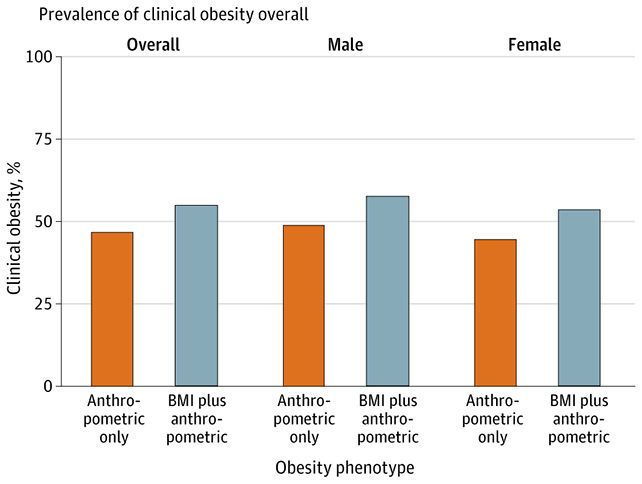Report on the Redefinition of Obesity and its Implications for Sustainable Development Goals
Introduction: A Paradigm Shift in Obesity Diagnosis
A new framework for defining obesity is being proposed, moving beyond the traditional Body Mass Index (BMI) to a more comprehensive set of measurements. This shift is critical for accurately assessing health risks and aligning public health strategies with global targets, particularly the Sustainable Development Goals (SDGs).
- The limitations of BMI as a sole indicator of health are acknowledged, as it does not consistently correlate with body fat percentage, a key factor in metabolic health.
- A commission led by King’s College London has proposed a new framework that incorporates anthropometric measurements for a more accurate diagnosis of obesity.
- These measurements include:
- Waist circumference
- Waist-to-hip ratio
- Waist-to-height ratio
Key Findings from a U.S. Health Database Analysis
A recent study conducted by Mass General Brigham tested the proposed definitions on a cohort of 301,026 individuals over an average of four years. The results indicate a substantial reclassification of the adult population’s weight status.
- Under the new, multi-metric definition, the prevalence of obesity in the study group increased from 42.9% (based on BMI alone) to 68.6%.
- The analysis revealed significant demographic variations, with nearly 80% of adults over the age of 70 meeting the new criteria for obesity.
- Individuals newly classified as obese were found to have a significantly higher risk of developing non-communicable diseases (NCDs) and experiencing premature mortality.
Implications for SDG 3: Good Health and Well-being
The study’s findings have profound implications for achieving Sustainable Development Goal 3, which aims to ensure healthy lives and promote well-being for all at all ages. The revised definition directly supports progress towards specific targets within this goal.
- Target 3.4: By 2030, reduce by one-third premature mortality from non-communicable diseases through prevention and treatment. The new definition enhances the ability to identify individuals at high risk for NCDs such as diabetes and cardiovascular disease, enabling earlier and more effective preventative interventions.
- The improved accuracy in diagnosing obesity allows for better allocation of healthcare resources and the development of targeted treatment strategies, including the potential use of obesity medications for a larger, more accurately defined patient population.
- By focusing on body composition and fat distribution rather than just weight, the new framework provides a more robust tool for public health initiatives aimed at combating the global obesity epidemic and its associated health consequences.
Conclusion and Future Outlook
The proposed redefinition of obesity represents a significant advancement in clinical and public health practice. While not yet officially adopted by governments, it has been endorsed by 76 organizations, including the American Heart Association.
- Adoption of this framework would lead to a dramatic increase in the diagnosed prevalence of obesity, highlighting the true scale of this public health challenge.
- This reclassification underscores the importance of body composition in health risk assessment and supports a more nuanced approach to weight management.
- Ultimately, implementing a more accurate diagnostic standard for obesity is a crucial step toward mitigating the burden of NCDs and advancing the global agenda for sustainable development, particularly the objectives outlined in SDG 3.
Analysis of SDGs, Targets, and Indicators
1. Which SDGs are addressed or connected to the issues highlighted in the article?
- SDG 3: Good Health and Well-being: The entire article is centered on public health, specifically the definition and prevalence of obesity. It discusses how a new, more accurate definition of obesity can better identify individuals at risk for non-communicable diseases (NCDs) such as diabetes and cardiovascular disease. This directly aligns with SDG 3’s mission to “ensure healthy lives and promote well-being for all at all ages.” The article’s focus is on improving health outcomes by refining diagnostic criteria for a major health epidemic.
2. What specific targets under those SDGs can be identified based on the article’s content?
- Target 3.4: By 2030, reduce by one-third premature mortality from non-communicable diseases through prevention and treatment and promote mental health and well-being. The article explicitly states that the new definition of obesity is better at identifying individuals at a “significantly higher risk of diabetes, cardiovascular disease, and mortality.” By improving the identification of at-risk populations, health systems can better implement preventative measures and treatments, directly contributing to the goal of reducing premature mortality from these NCDs. The discussion about prioritizing “treatment approaches” and the potential for increased use of “obesity medications” underscores this connection.
3. Are there any indicators mentioned or implied in the article that can be used to measure progress towards the identified targets?
- Prevalence of obesity: The article’s central point is the dramatic increase in the measured prevalence of obesity under the new definition, from 42.9% to 68.6% of the US adult population studied. This prevalence rate is a primary indicator of the scale of the public health challenge.
- Incidence of non-communicable diseases: The article implies that the incidence and prevalence of diabetes and cardiovascular disease are key indicators. It notes that the newly classified obese population has a “significantly higher risk” of these conditions, suggesting that tracking these diseases is essential to understanding the impact of obesity.
- Mortality rate from NCDs: While no specific figures are given, the article mentions that the new obesity classification identifies a group with a higher risk of “mortality.” This directly relates to the official SDG indicator 3.4.1 (Mortality rate attributed to cardiovascular disease, cancer, diabetes or chronic respiratory disease).
- Anthropometric measurements: The article introduces “waist circumference, waist-to-hip ratio, and waist-to-height ratio” as new, more effective indicators for assessing health risks associated with excess body fat, moving beyond the traditional Body Mass Index (BMI). These measurements serve as direct indicators for identifying at-risk individuals.
4. Summary Table of Findings
| SDGs | Targets | Indicators |
|---|---|---|
| SDG 3: Good Health and Well-being | Target 3.4: Reduce by one-third premature mortality from non-communicable diseases through prevention and treatment. |
|
Source: sciencealert.com







